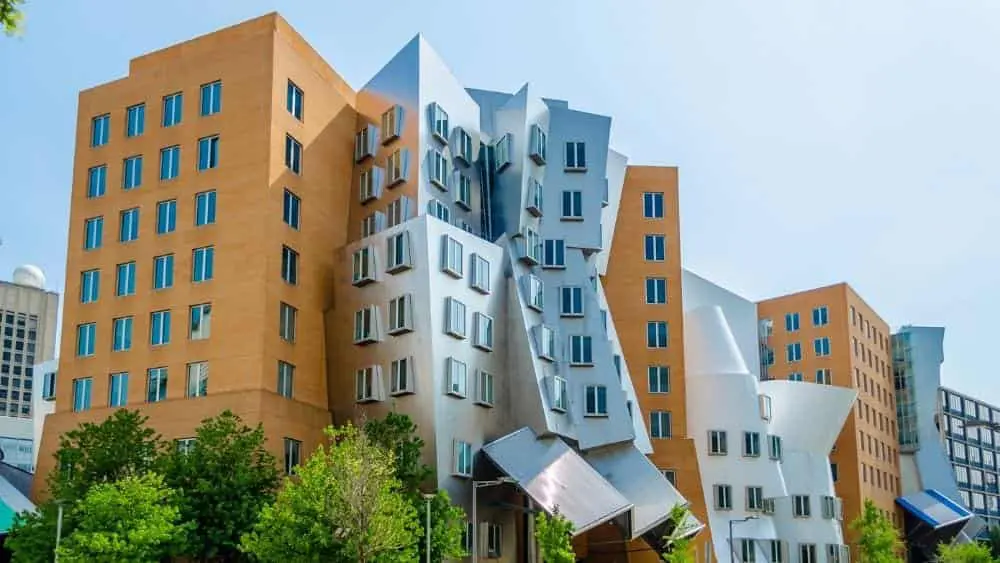
Do you know your design style? If you like warmer, brighter and more experimental design, you might be a fan of the postmodern style.
While some designers have criticized the postmodern movement for its outward commerciality and orientation to the consumer, plenty of others have praised its bold and refreshing “anything goes” approach. In fact, when postmodernism first came on the scene, most people relished the chance to break the rules and stray from formality, characteristics which have made this style perennially popular.
Above all, postmodernism embraces individualism and experimentation, which comes to life through funky combinations of texture, color, lines, and materials. Let’s take a closer look at this controversial and exciting style.
History of Postmodern Design
Beginning with architecture in the late 1960s, postmodernism emerged as an interior design style in the 1970s. With its heyday falling between 1970 and 1990, the genre experienced its peak in the image-focused glam world of the 1980’s.
At its core, postmodernism was an attempt to break free from the practical, muted, and often impersonal approach of modern design. Instead, postmodernism celebrates the unconventional, the flashy, and the weird.
Fueled by the idea that design doesn’t need to follow rules, the postmodern style mirrored the emerging social outlooks of the times. Mismatched elements came together to create playfully extravagant looks, and the definitions of an item’s function became more fluid.
Today, postmodern design is enjoying a renaissance with a return to hand-made items, bold patterns, and outside-the-box approaches to décor.
Characteristics of Postmodern Design/How to do it in the Home
How do themes of ad-hocism, contradiction and irreverence translate into the physical space? In other words, how do you do postmodern design in the home?
Colors
Award-winning artist and designer Pablo Solomon notes that early on, bold, primary colors were prominent in postmodern design. Later, however, color became less important as the play between form and function gained more emphasis.
Today, the post-modern color palette also includes a mix of natural and retro shades like avocado green, mustard, burnt orange, turquoise and even metallic tones. But if another color inspires you then by all means – go for it!
Textures and Materials
As you might have guessed, the materials and textures used in postmodern design are a pastiche of unorthodox combinations. According to Nicola Croughan, an interior designer at Blinds Direct in the U.K., leather, glass, plastic and laminates are exemplary of this look.
Designers in the 1980’s used salvaged and distressed materials to create an air of urban apocalypse, a technique that remains in heavy rotation today. However, says Croughan, chunky knits and natural wood grains can be used to add warmth and charm to a postmodern room. Lush materials like velvet and fur are also welcome. The key to texture in postmodern design is layering.
Shape and Line
The use of asymmetry increased during the postmodern period, while at the same time straight lines gave way to odd angles and ambiguous shapes. As Solomon says, “This period produced some amazingly interesting light fixtures, furniture, decorative objects and wall art.”
Building upon what began with Andy Warhol and pop art, the postmodern period welcomed pop culture references in art and design. The lines between pop culture and high culture were blurred as vintage toys or action figures became display items, and references to popular movies or music would find themselves on walls. Sweeping references to street art or urban culture also appeared in the form of wall treatments or complete design themes.

Rebecca Rosenberg is a freelance copywriter, digital media strategist and world traveler. After working in marketing for some of Austin’s most beloved brands, Rebecca started her own business and left Texas behind to travel the world. You can find her currently bumming around Europe. Often flying solo, she has visited over 35 countries and lived abroad in four. In addition to being a digital nomad, Rebecca is an avid hiker, design enthusiast and certified plant nerd. She speaks English, Spanish, German and Korean.
 Best Amenities Found in Manufactured Home Communities
Best Amenities Found in Manufactured Home Communities